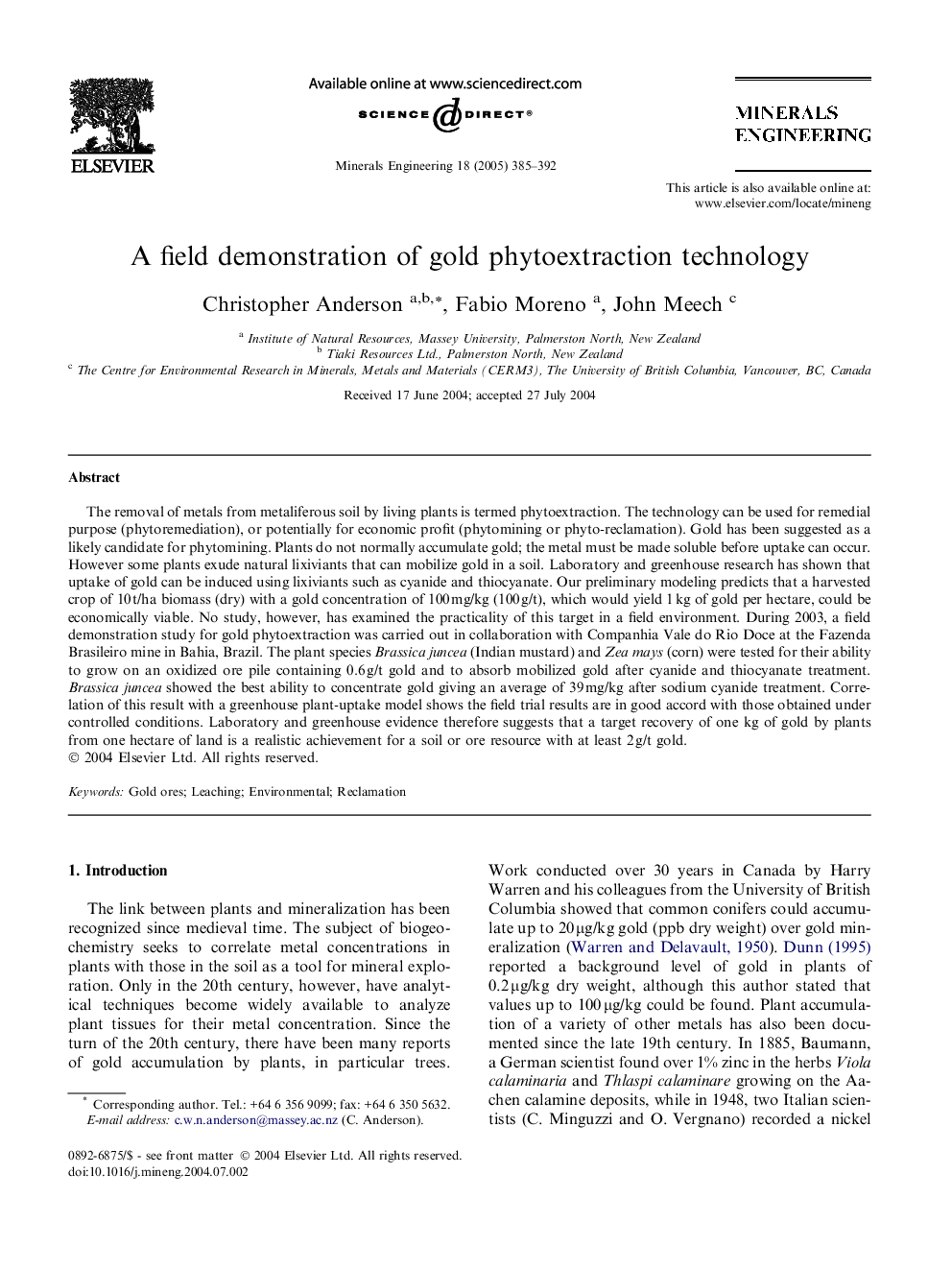| Article ID | Journal | Published Year | Pages | File Type |
|---|---|---|---|---|
| 10279866 | Minerals Engineering | 2005 | 8 Pages |
Abstract
The removal of metals from metaliferous soil by living plants is termed phytoextraction. The technology can be used for remedial purpose (phytoremediation), or potentially for economic profit (phytomining or phyto-reclamation). Gold has been suggested as a likely candidate for phytomining. Plants do not normally accumulate gold; the metal must be made soluble before uptake can occur. However some plants exude natural lixiviants that can mobilize gold in a soil. Laboratory and greenhouse research has shown that uptake of gold can be induced using lixiviants such as cyanide and thiocyanate. Our preliminary modeling predicts that a harvested crop of 10Â t/ha biomass (dry) with a gold concentration of 100Â mg/kg (100Â g/t), which would yield 1Â kg of gold per hectare, could be economically viable. No study, however, has examined the practicality of this target in a field environment. During 2003, a field demonstration study for gold phytoextraction was carried out in collaboration with Companhia Vale do Rio Doce at the Fazenda Brasileiro mine in Bahia, Brazil. The plant species Brassica juncea (Indian mustard) and Zea mays (corn) were tested for their ability to grow on an oxidized ore pile containing 0.6Â g/t gold and to absorb mobilized gold after cyanide and thiocyanate treatment. Brassica juncea showed the best ability to concentrate gold giving an average of 39Â mg/kg after sodium cyanide treatment. Correlation of this result with a greenhouse plant-uptake model shows the field trial results are in good accord with those obtained under controlled conditions. Laboratory and greenhouse evidence therefore suggests that a target recovery of one kg of gold by plants from one hectare of land is a realistic achievement for a soil or ore resource with at least 2Â g/t gold.
Related Topics
Physical Sciences and Engineering
Chemical Engineering
Chemical Engineering (General)
Authors
Christopher Anderson, Fabio Moreno, John Meech,
